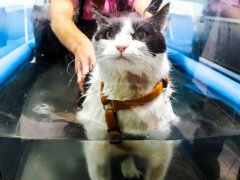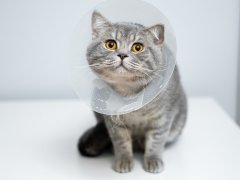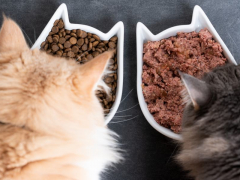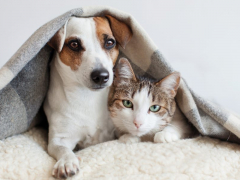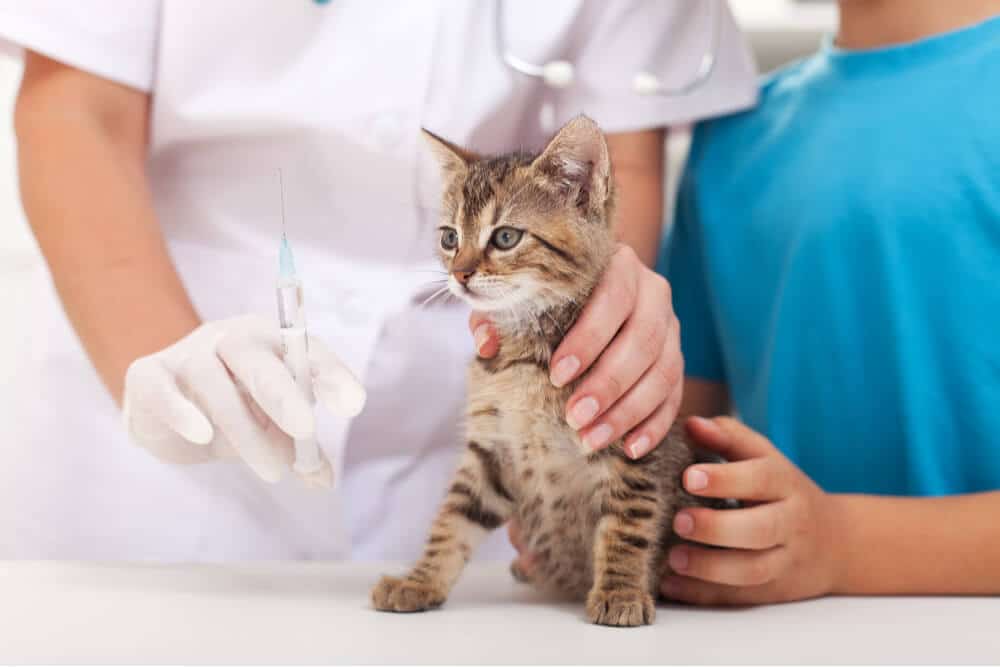
Everyone knows that kittens need to be vaccinated, but when questioned, few people really understand which diseases the FVRCP vaccine for cats protects against.
This article aims to summarise what’s involved in simple, easy to understand terms.
What Is the Fvrcp Vaccine for Cats?
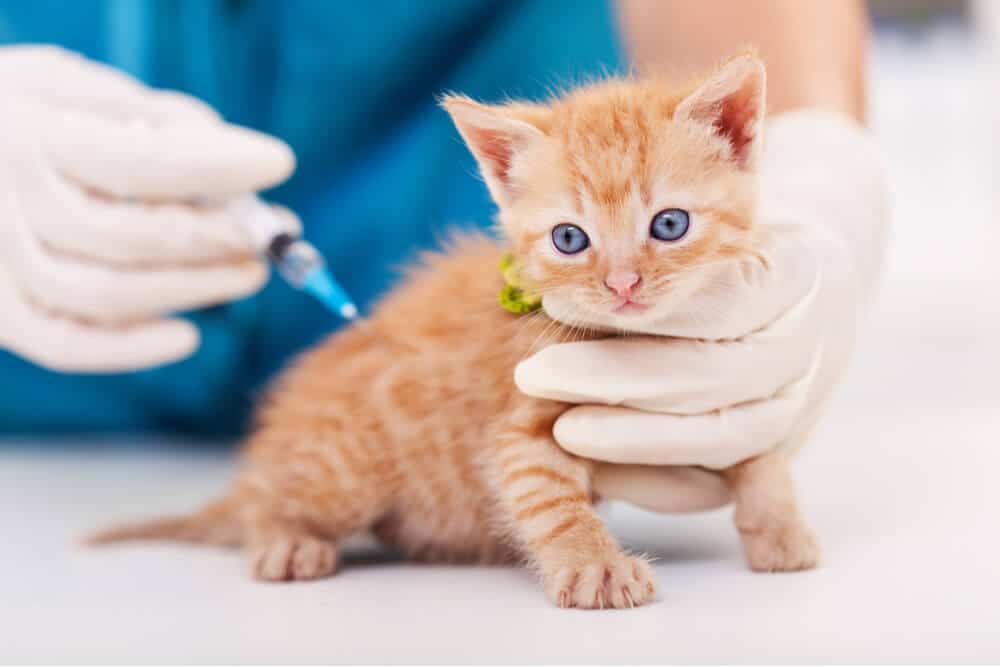
FVRCP is an abbreviation for three serious infectious diseases, Feline Viral Rhinotracheitis (FVR), Calicivirus (C), and Panleukopenia (P).
These are three separate viral infections that are common in cats, causing serious and/or life-threatening illnesses if unvaccinated kittens or cats are infected. Prevention of these viral infections is a central part of good kitten and cat care.
These are known as core vaccines, meaning that they are recommended for all cats under the World Small Animal Veterinary Association (WSAVA) and American Association of Feline Practitioners feline vaccination guidelines. Vaccination against all three diseases is included in the combination vaccine that is commonly given to all kittens when they first visit the vet.
The FVRCP Vaccine For Cats Protects Against The Following Three Types Of Disease.
Each of these three viral infections cause entirely different types of disease.
1. Feline Viral Rhinotracheitis (FVR)
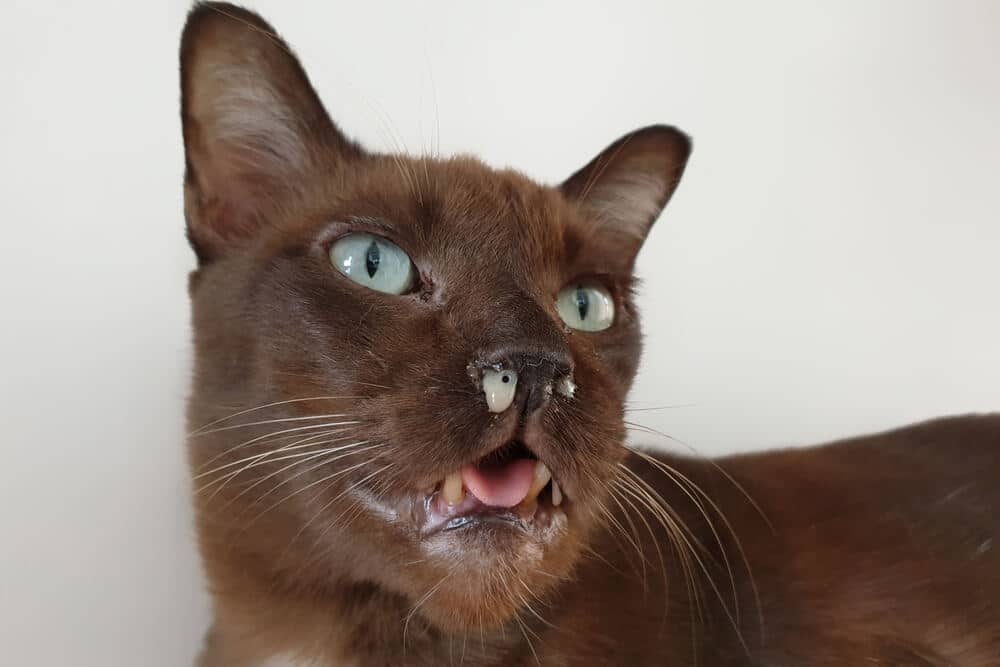
Unvaccinated cats may contract feline rhinotracheitis, which is a type of respiratory infection that causes sneezing, a runny nose, and potentially, pneumonia.
This is caused by Feline herpesvirus-1 (FHV-1), and it’s the most common upper respiratory infection to affect cats. Together with Feline Calicivirus, they are known colloquially as “cat flu” or “feline upper respiratory disease complex”.
FVR is common in young unvaccinated cats, especially those living in groups, such as shelters, multi-cat households or colonies. As can be deduced from the name “rhinotracheitis”, the main signs are linked to inflammation of the lining of the nasal passages and windpipe. Affected cats sneeze, with a runny nose and copious nasal discharge, and there is a risk of pneumonia, with coughing.
The eyes are also affected, with inflammation of the lining of the eye (conjunctivitis), copious ocular discharge, and sometimes changes to the eye itself, including corneal ulceration. High temperature often accompanies acute infections, and affected cats are dull and inappetent.
The illness is potentially fatal in kittens or in older cats with reduced immunocompetence, and while most cats do recover after 10 -14 days, over 80% then become carriers of the virus for life, having recurrent episodes of signs of infection especially at times of stress. This chronic recurrence of clinical signs has some similarities with herpes simplex cold sores in humans.
Also Read: Feline Viral Rhinotracheitis (AKA FHV): Causes, Symptoms, & Treatment
2. Feline Calicivirus (FCV)
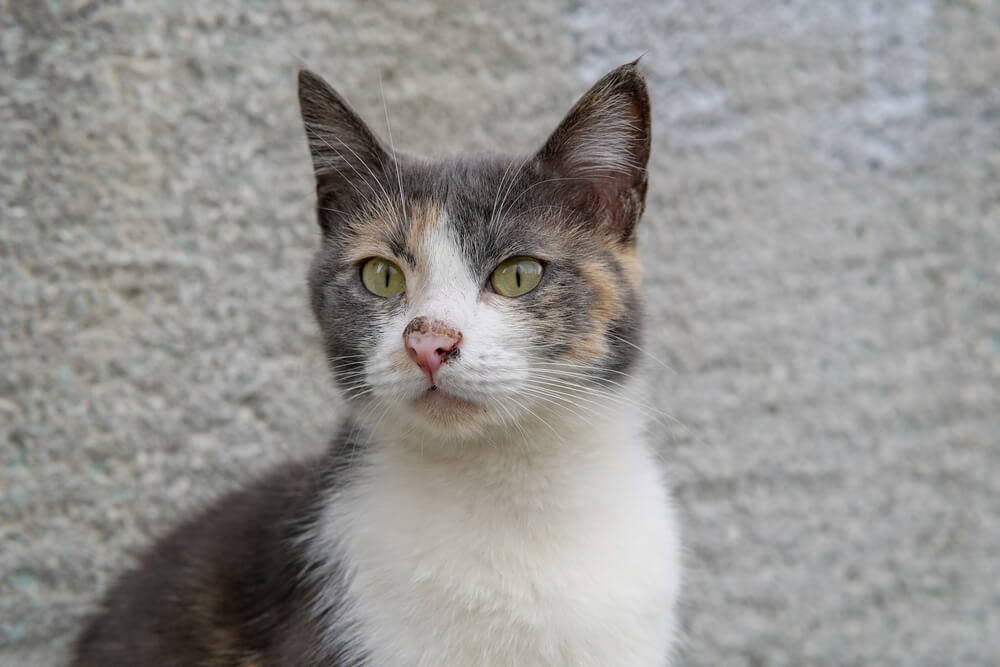
Cats who haven’t been vaccinated against it may develop feline calicivirus, which causes inflammation of the upper respiratory tract and eyes.
Feline Calicivirus (FCV) causes upper respiratory disease that often closely resembles Feline Viral Rhinotracheitis, with generalised inflammation of the upper respiratory tract and eyes, leading to sneezing, bilateral ocular discharge, a high temperature, dullness, and inappetence.
A key distinguishing feature is that Calicivirus tends to cause visible ulcers in the oral cavity and on the tongue. Affected cats also have gingivitis and stomatitis, often drooling.
Again, pneumonia is a possible complication, with coughing and difficulty breathing. Other signs, such as lameness, are sometimes seen, and more serious systemic signs can occur. While most cats eventually recover, fatalities do occur, and many recovered cats become chronic carriers of the virus.
Also Read: Calicivirus In Cats: Causes, Symptoms, & Treatment
3. Feline Panleukopenia
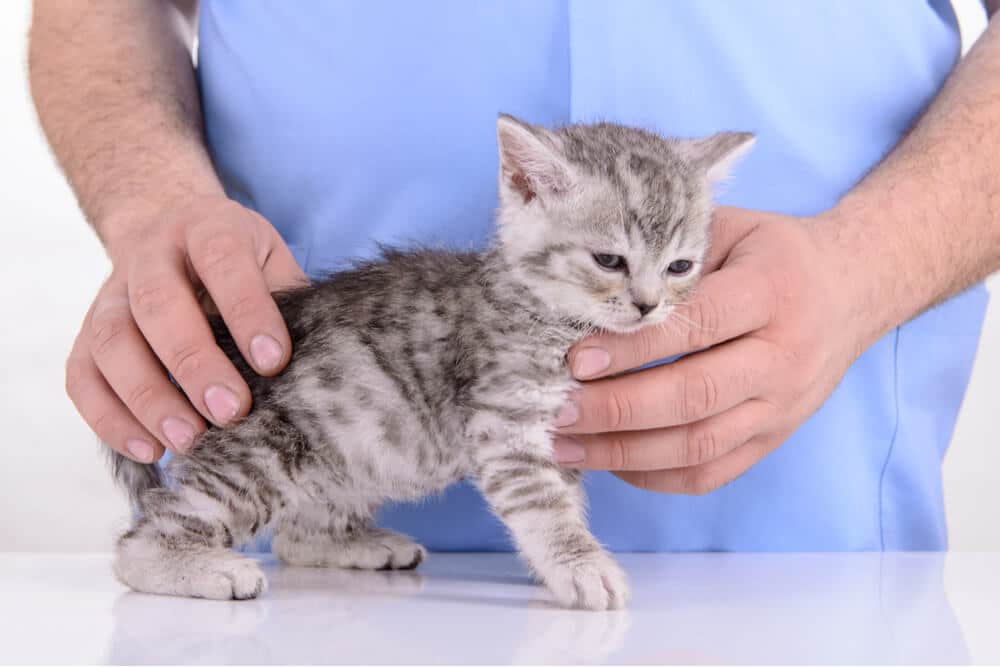
If not vaccinated, cats may develop feline panleukopenia or distemper, a serious disease with a particularly high mortality rate among kittens.
Feline Panleukopenia, also known as Feline Distemper, is a serious and life-threatening viral infection caused by Feline Parvovirus (FPV). It’s a highly contagious disease with a high mortality rate in kittens aged between 2 and 5 months.
The virus is similar to Canine Parvovirus, and the clinical signs are similar too, with the intestinal tract being a focus for viral damage. Affected cats have a high temperature, dullness, inappetence, as well as vomiting, diarrhea and a range of other systemic signs.
As its name suggests, the virus causes significant suppression of white blood cell production in the bone marrow (panleukopenia), with the consequent diminished immune response making affected cats even more vulnerable to serious complications of the illness including bacterial infections.
Also Read: Feline Distemper AKA Feline Panleukopenia Virus in Cats
Why Should Your Cat Get the FVRCP Vaccine?
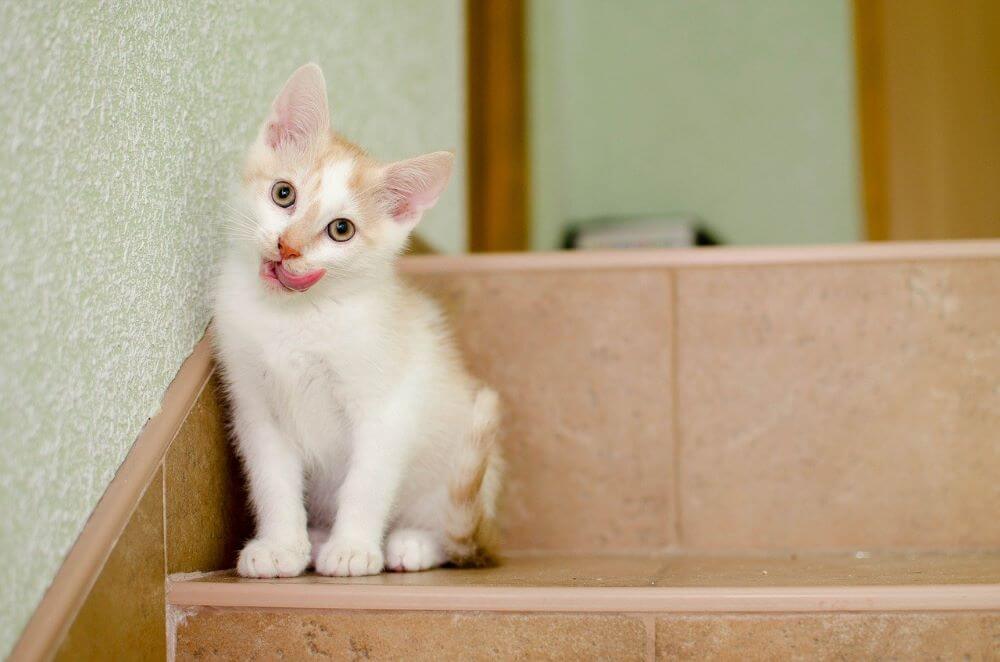
The feline leukemia vaccine is associated with minor side effects in some cats.
In all three of the diseases listed above, no effective anti-viral treatment is available, and veterinary care for infected cats is basically supportive, helping affected animals cope with the serious signs of illness until their own immune system allows them to recover.
In some cases, despite the best veterinary care, affected animals do not survive. This is why vaccination against the viruses is so strongly recommended: it provides highly effective protection so that kittens and cats never develop clinical disease.
When Should Your Cat Get The FVRCP Vaccine?
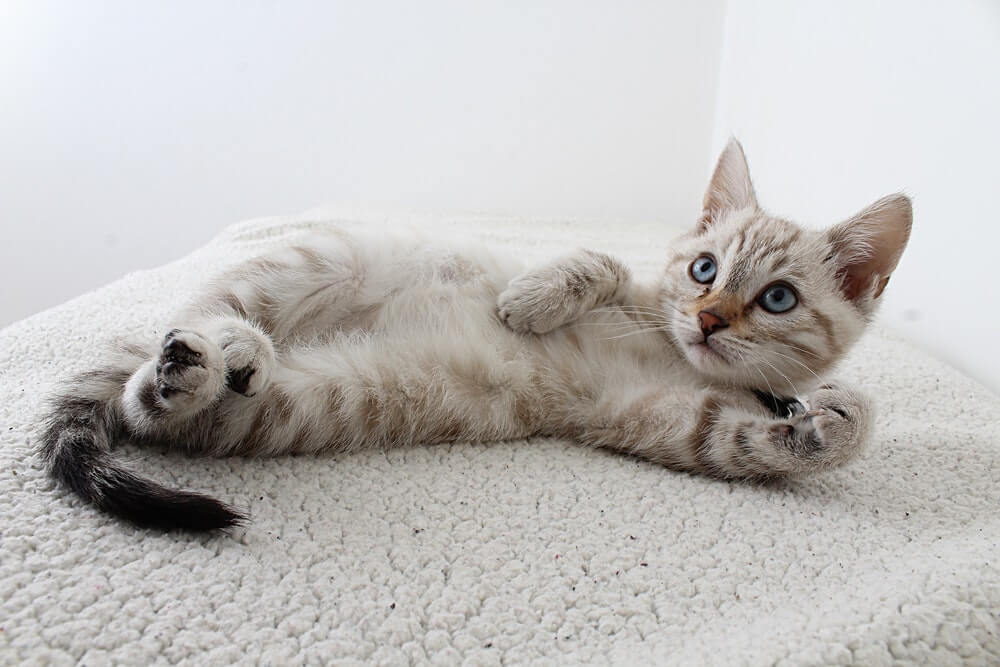
The precise timing of vaccinations depends on the type of vaccination schedule used by your local veterinarian, so you should discuss the details with them directly. In general, vaccinations are recommended for kittens at 8–9 weeks of age, with a second vaccine given 3–4 weeks later and a third vaccine often given between 14–16 weeks of age. A booster vaccination is then given 6 – 12 months later, with further booster shots given every 1 – 3 years depending on needs, after discussing your cat’s lifestyle with your veterinarian.
How Much Does The FVRCP Vaccine Cost?
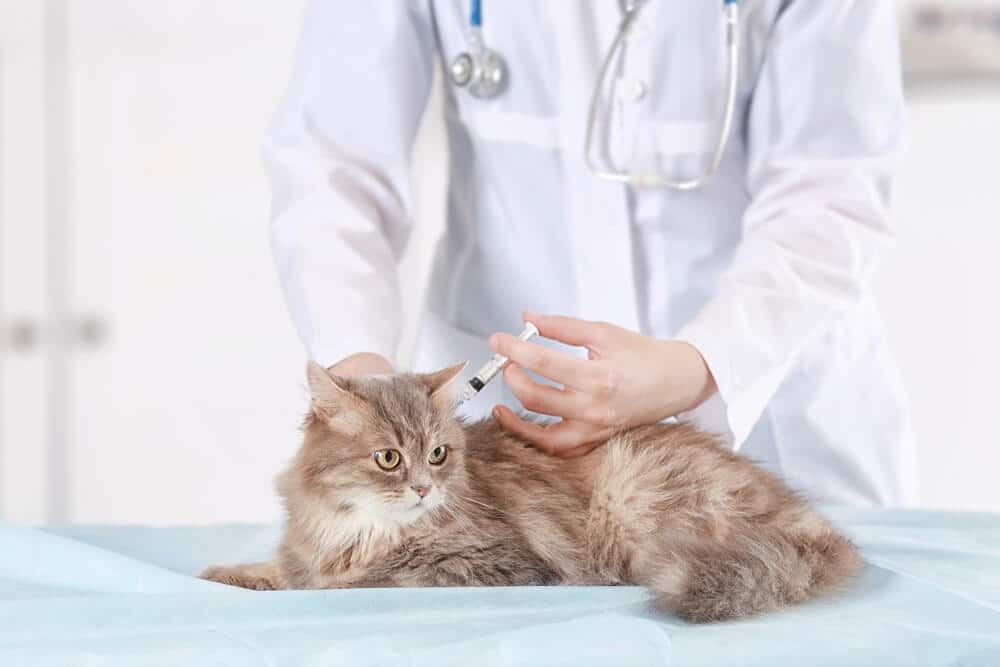
The cost depends on your location and your choice of veterinarian: you should phone around your local area to discover the range of prices on the market place. In general, the fee represents a combination of a veterinary clinical examination of your pet (to make sure that they are healthy enough to vaccinate) as well as the cost of the vaccine itself.
FVRCP Vaccine Side Effects
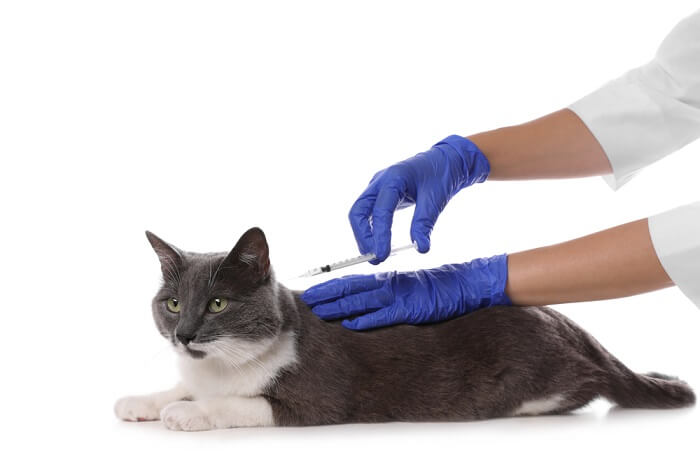
Side effects of FVRCP vaccination are rare and usually very minor, such as transient episodes of dullness, with mild pyrexia, and perhaps mild bouts of sneezing. Occasionally there may be minor swelling and discomfort at the injection site.
As with any injected product, exceptionally rarely, an allergic anaphylactic reaction can occur, with more serious signs. As a veterinarian qualified for over thirty years, I have never witnessed this after a cat vaccination.
Frequently Asked Questions
Is Fvrcp Vaccine Necessary for Indoor Cats?
the FVRCP vaccine is recommended for indoor cats to protect against common viral infections like feline herpesvirus, calicivirus, and panleukopenia, which can still be contracted through indirect contact or if they accidentally escape outdoors.
How often do cats need fvrcp vaccine?
Cats typically require the FVRCP vaccine every one to three years, depending on factors such as their age, lifestyle, and individual health status.

